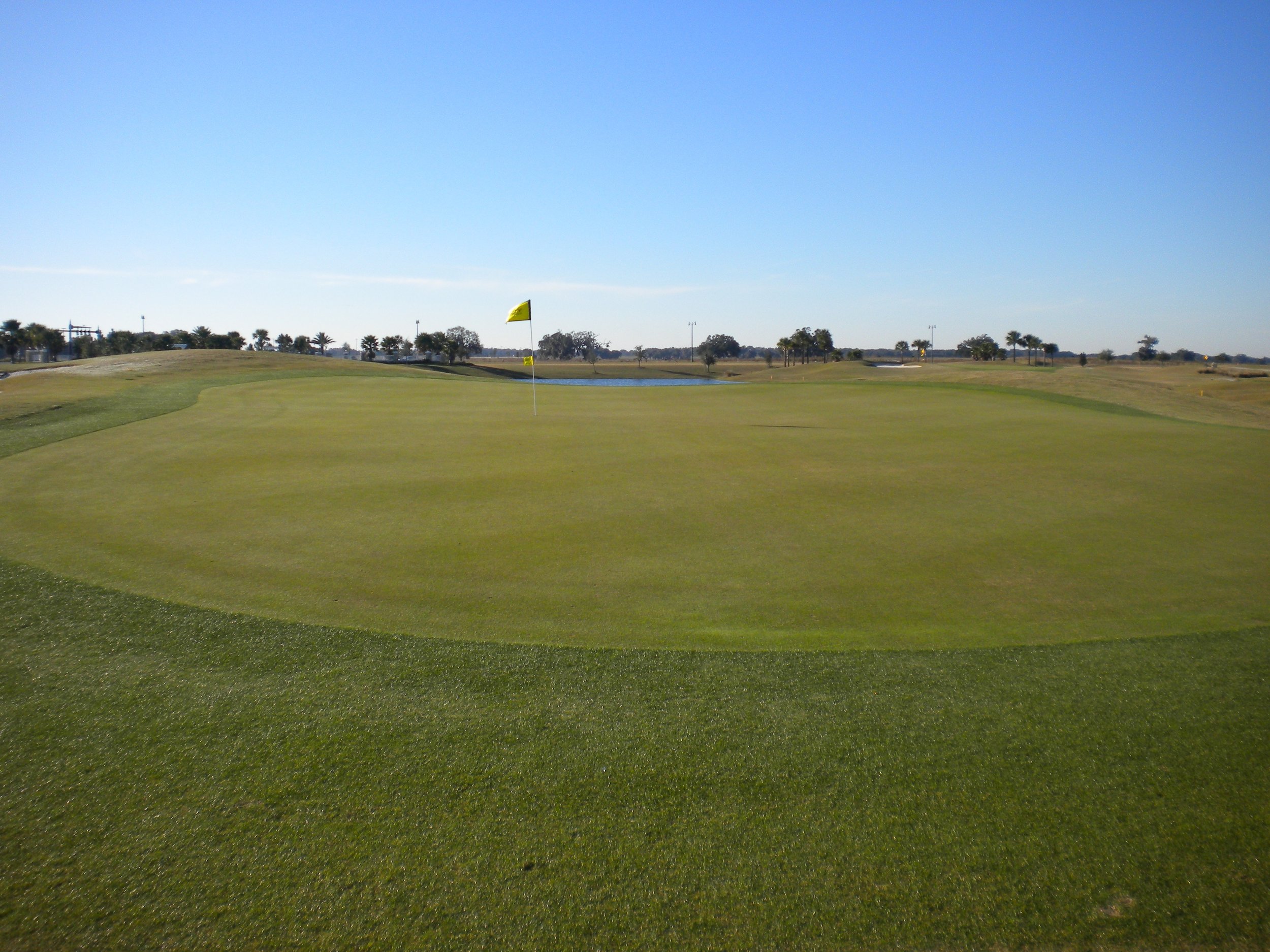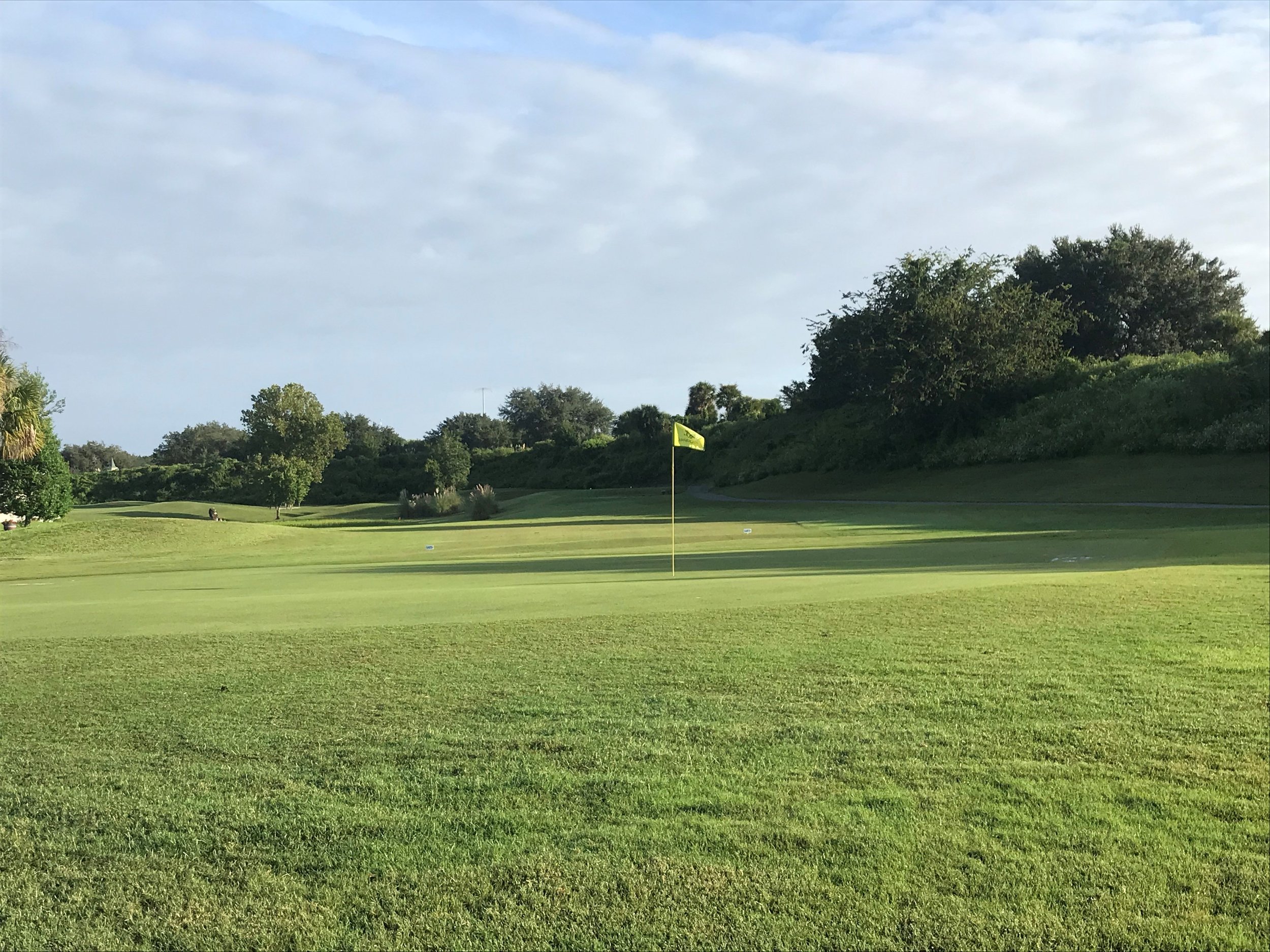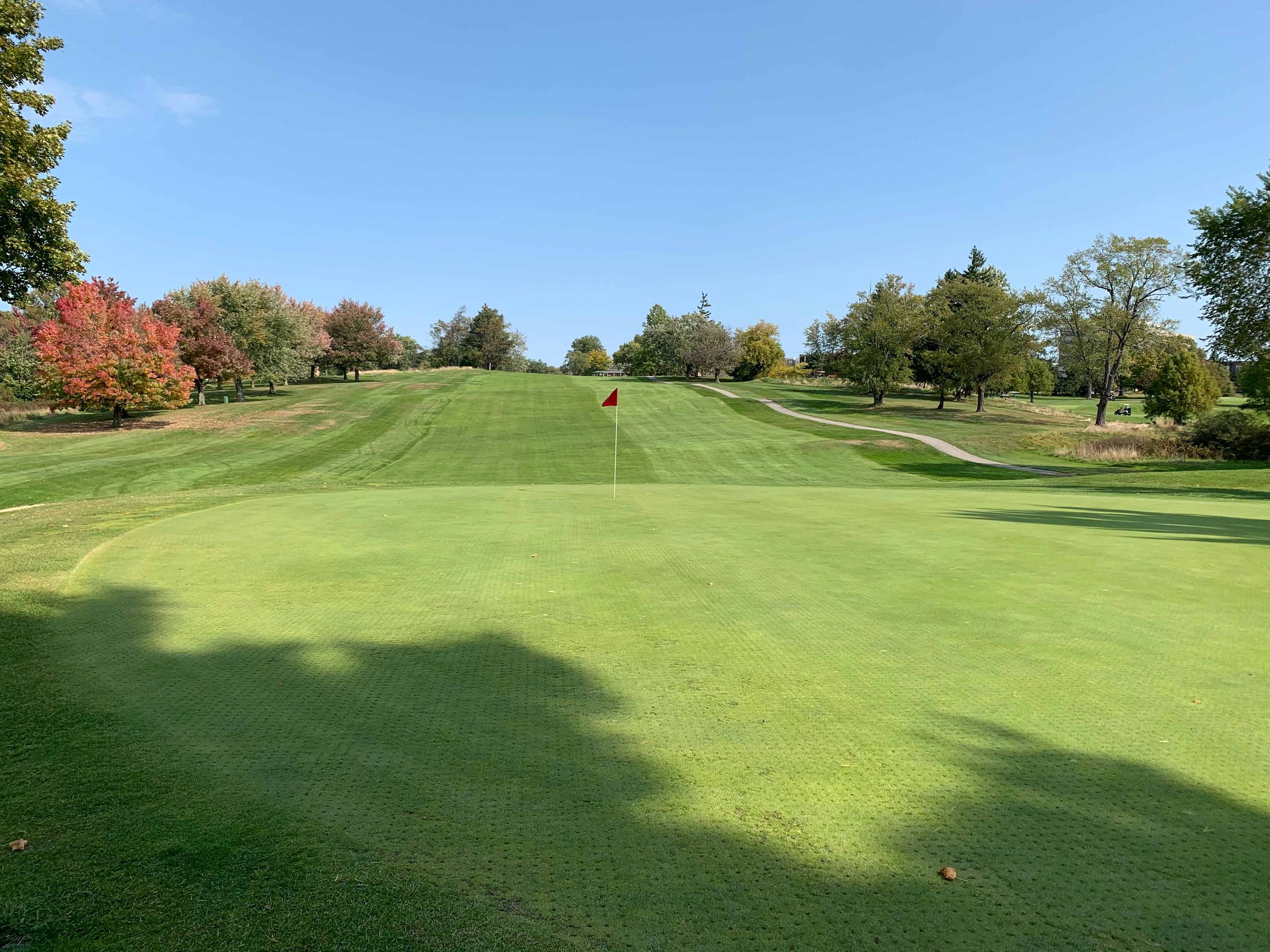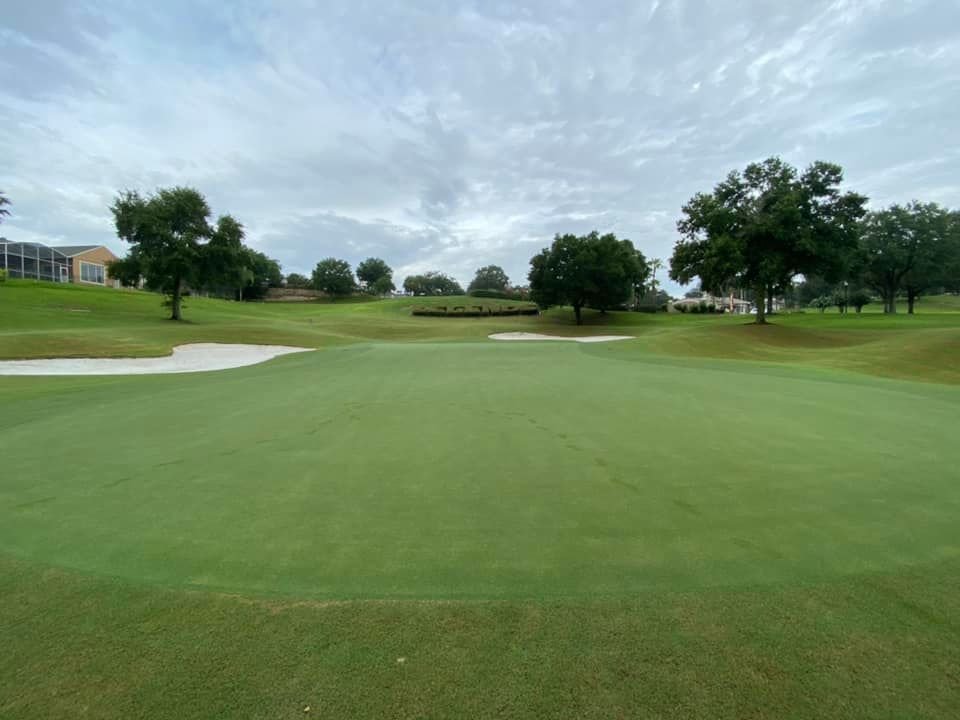Golf courses consist of living elements like turfgrass, plants, and trees. Golfers and golf lovers alike love a well-groomed and maintained turf that offers interesting, high-quality play.
But since these are all living elements, natural changes in them can affect the appearance and quality of the golf course. Therefore, a lot of care is taken to make golf courses look the way they do. One of the most common problems that can affect the quality of a golf course is insects.
Need for Insect/Pest Management
The diverse natural environment of a golf course attracts a lot of insects, which is not a bad thing per se, as beneficial insects are necessary to maintain the ecological balance of the golf course through activities like pollination and acting as predators to other insects. It becomes a problem when pests like white grubs and mole crickets invade the golf course.
White Grubs

The most destructive insect species for turfgrass are white grubs. They work below the surface of the soil, feeding on the roots of the grass, taking out the turfgrass root system and ultimately killing all the grass.
Mole Crickets
One of the very troublesome pests on the golf course are mole crickets. Mole crickets are mostly found in the Southern United States. These insects tunnel through the soil, which will loosen the soil, exposing the grass and leaving it to die. Mole crickets will also take the dead grass into their tunnels and use it as nesting material. Mole crickets can burrow ten to twenty feet in one night, leaving the turf on the greens at risk.
Other Insects
Other insects like spider mites and whiteflies affect the growth of trees and cause excessive leaf shedding by sucking the sap and plant juices and weakening the trees.
Therefore, it is essential to get rid of these unwelcome additions to the golf courses quickly and effectively before they end up damaging large areas of the golf course. These damages can also be expensive to fix. To prevent this, various methods are used, and one of the most prevalent ones is insecticides or pesticides.
Use of Insecticides/Pesticides
The history of golf courses and pesticides is long, as golf courses have used chemicals of all kinds to maintain perfectly manicured golf courses that provide improved playability for many decades. Synthetic pesticides are incredibly effective in controlling and eliminating pests without the involvement of much labor. Therefore, the widespread use of all these various chemicals was not questioned much.

It was only in the second half of the twentieth century that environmental consciousness started to rise up slowly, and the environmental and human impacts of indiscriminate pesticide use started gaining attention.
In the 1990s, research connecting exposure to pesticides as an occupational hazard and residential proximity to the areas where pesticides were used abundantly (like agricultural sites) to an increased risk of contracting Parkinson’s Disease (K M Semchuk, E J Love, R G Lee, 1992) was published along with research regarding children’s exposure to organophosphate insecticides and the risks they pose to their health (B Eskenazi, A Bradman, R Castorina, 1999). They raised awareness of the health impacts of pesticide drift.
When this information was combined with the data provided in Toxic Fairways published in 1995 (revised) which revealed that golf courses used about 50,000 pounds of pesticides per year (about 4-7 times more than the pesticides used in agricultural sites), it became imperative that measures need to be taken to make pesticide use more environmentally responsible on golf courses. This led to ‘responsible golf’ gaining popularity in the industry.
Many courses began to adapt their course maintenance and development methods to the newer, responsible methods. The United States Golf Association (USGA) and the Golf Course Superintendents Association of America (GCSAA) created research projects to course-correct, pursuing a more responsible long-term strategy. One of the methods adopted was Integrated Pest Management (IPM).
Integrated Pest Management (IPM)
Integrated Pest Management is a long-term pest management strategy that combines biological, cultural, physical, and chemical methods to reduce economic, health, and environmental concerns while effectively maintaining turfgrass quality. For golf, this definition is expanded to include cultural practices that focus on growing turfgrass that is healthy, stress-tolerant and disease-resistant.

A typical IPM plan for golf courses involves the following:
Cultural Practices
Regular cultural practices that maintain turfgrass at its best are important to keep turfgrass healthy and disease resistant to prevent the invasion in the first place.
Grass Type/Species Selection
Turfgrass species and cultivars must be chosen to suit the weather and playing conditions in the local region. Choose adaptable species and cultivars as these will require less water, fertilizers and pesticides to grow. When a species is introduced into a location outside of its natural region of adaption, it becomes more vulnerable to pests. For example, cool-season grass like Kentucky bluegrass will struggle to survive on warm-season golf courses, and Bermuda grass will not thrive on golf courses that receive a lot of shade.
Mowing
While the turfgrass species and rate of growth directly influence the mowing height and frequency, the general rule of thumb for mowing grass still stands regardless of the grass type. With each mowing, no more than 1/3 of the leaf blade should be removed to reduce stress on the plant. Cutting heights of 1/8 inch or less on greens can put the turfgrass under a lot of stress during extreme weather conditions. The use of lightweight mowers on greens and fairways greatly lowers the impact of soil compaction on turf growth, providing proper room for roots to grow and develop.
Irrigation
Insects are less likely to attack turf that has been properly irrigated. One of the most typical issues in the golf course is excessive irrigation. To achieve uniform coverage, inspect the irrigation system to check that all irrigation heads are operational and correctly set.
The frequency of irrigation should be determined by the turf’s evapotranspiration (ET) requirements. Irrigating deeply and less frequently results in turfgrass that has a deeper root structure and is healthier overall. To calculate turf irrigation requirements, consider the root depth, soil moisture, and ET conditions.
Fertilizing
Fertilization should be timed to coincide with the turf’s nutritional and development requirements. The frequency with which fertilizer is applied depends on the turfgrass species and the type of fertilizer used. When possible, slow-release fertilizers, sulfur-coated urea, and natural organic materials should be utilized on golf courses. With each application, use low rates of inorganic fertilizers.
IPM Strategies for Pesticide Use
For golf courses that are facing problems due to insects and other pests, despite the best efforts of golf course superintendents, the following Integrated Pest Management strategies direct the use of pesticides in a well-informed manner, with the reasonable application of pesticides.
Scouting
Scouting for insect pests entails finding the insect in all stages of development – egg, juvenile, and adult – and attempting to quantify the number. Inspecting for pest damage to the turf and installing traps to catch them are all part of scouting for insects.
Visual inspection, soil samples, soap flushes, and insect trapping are some of the scouting techniques. Record the scouting results to generate historical data, document pest activity trends, and keep track of the measures that were successful and others that failed and use this information to make future decisions.
Monitoring
Monitoring pests involves regularly observing the pests that were identified in the scouting process. Depending on the type of pests, the monitoring frequency can be daily, monthly or weekly. The conditions that are conducive to their outbreak should be noted. The areas of the golf course that experience frequent outbreaks, the size of the disease-patch, and the percentage of the area that is affected should also be made a note of.
A trained pest control personnel should be able to correctly identify the life stage (larvae, juvenile, adult) at which to target a particular pest for maximum effectiveness.
Setting Action Thresholds

IPM establishes an action threshold before initiating any pest management action. This is a point where the increased pest populations pose a risk to the golf course environment and indicate that pest control intervention is required. The presence of a single insect does not always imply the necessity for control. The point at which pests become a financial and environmental danger must be considered when making future pest control decisions.
Setting action thresholds can be more difficult on golf courses than in agricultural settings because the golf industry is sensitive to aesthetic charm, and golfers might be intolerant of anything that affects how the turfgrass looks.
Control Measures
Once the pest infestation crosses the action threshold that had been set, then it is time to intervene, but the question arises as to how this is to be done. First, pest control methods that involve the least risk, like mechanical control methods (weeding, trapping) or fully targeted chemicals that impact pest mating, should be employed. More severe methods like targeted spraying of chemical pesticides should be used if the first method does not work.
In a 2012 report published by the Golf Course Superintendents Association of America (GCSAA) on the use of pesticides in U.S. golf courses, it was noted that 98 percent of the average U.S. 18-hole golf courses stored chemical pesticides on-site but only 41 percent had a written IPM plan. This ratio was not promising, therefore GCSAA recommended developing a written IPM plan for all golf courses to ensure responsible use of pesticides.
Pest control problems mostly erupt from turfgrass that is not healthy due to various underlying issues like lack of nutrients, poor irrigation practices, improper maintenance, etc. It is important to perform daily maintenance tasks for golf courses to provide the greens with the best possible chance to fight off insects and pests. For the pests that are already present on the golf course, proper identification and targeted control are necessary for maximum effectiveness. If you are looking for a golf course maintenance company that promises to deliver on all these fronts, contact DTE Golf® today.
